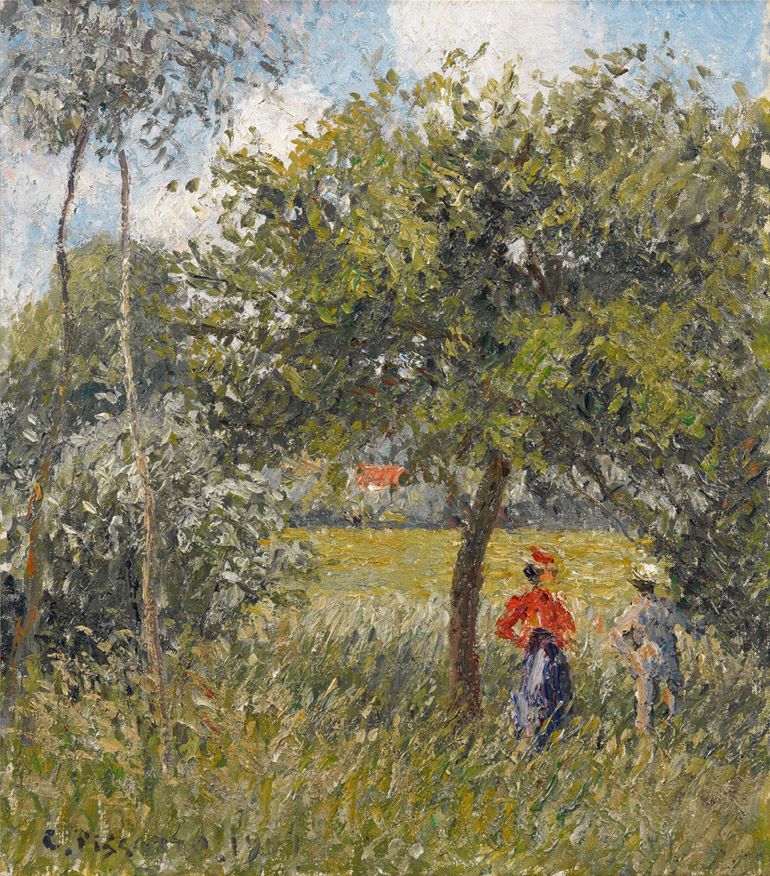
A Walk in the Orchard
This small canvas, dated 1901 and swiftly executed in bright colours, was painted at the very end of Camille Pissarro’s career; he died in 1903, having continued to paint until his final hours. By virtue of its subject matter and the spontaneity of its pictorial expression, it remains essentially Impressionistic, closer to Pissarro’s earlier canvases depicting women and children in public or private gardens, typical of their time, and evoking a naturalist flavour which was much admired by Émile Zola. Nevertheless, around 1885, Pissarro, who had always been very attentive to the experimentation of younger artists, embraced the new theories advocated by Georges Seurat (1859-1891) and Paul Signac (1863-1935), whom he invited to the eighth and final exhibition of the Impressionist group in 1886. He adopted the principle of dividing the brushstrokes into elements of pure colour to be juxtaposed on the canvas, which then came together, allowing for an optical mix much brighter to the eye than the blending of pigments on the palette. Pissarro also paid special attention to the rhythm and the expressiveness of the line. However, this method, which was particular to those who became known as the Neo-Impressionists and was notably revealed in Seurat’s large composition exhibited in 1886, Un Dimanche à la Grande Jatte (Art Institute of Chicago), was poorly suited to the intuitive temperament of Pissarro, who was quick to renounce its strictest applications.
This brief experience did not fail to leave its trace on the painter’s style: his palette became more vivid, and his fragmented, dynamic brushstroke animated his compositions. Even if, in the late 19th century, Pissarro devoted a large part of his output to urban views of Paris and Rouen, or harbour views of Le Havre or Dieppe, he remained attached to the countryside motifs of Ελληνικάhis early career. Living in Éragny-sur-Epte, not far from Pontoise, he used the area around his house as a source of subjects which were easily renewable. An intimate pochade painted by a sure, playful hand, Promenade dans le Verger is a good example of the painter’s later style. With their elaborate hats and their city clothes in the countryside, immersed in lush, summertime vegetation, the two figures suggest an abridged and revised version of the canonical themes of Impressionists such as Claude Monet (1840-1926), Berthe Morisot (1841-1895) or even Pierre-Auguste Renoir (1841-1919).
1901
oil on canvas
31.0 x 27.0 cm
AGLG 355
Image & text © A. G. Leventis Gallery, Nicosia
Where you'll find this

Permanent collection






